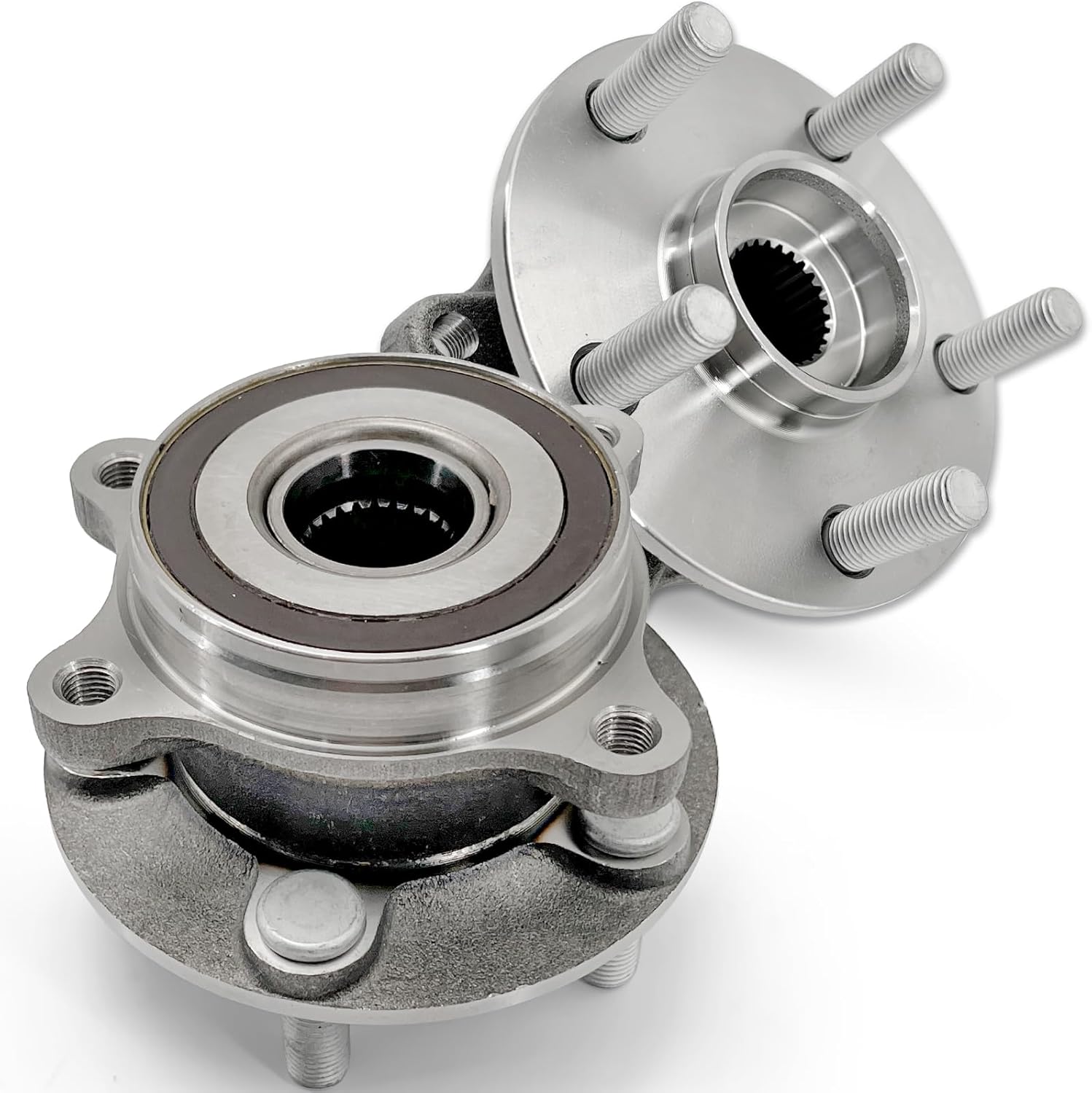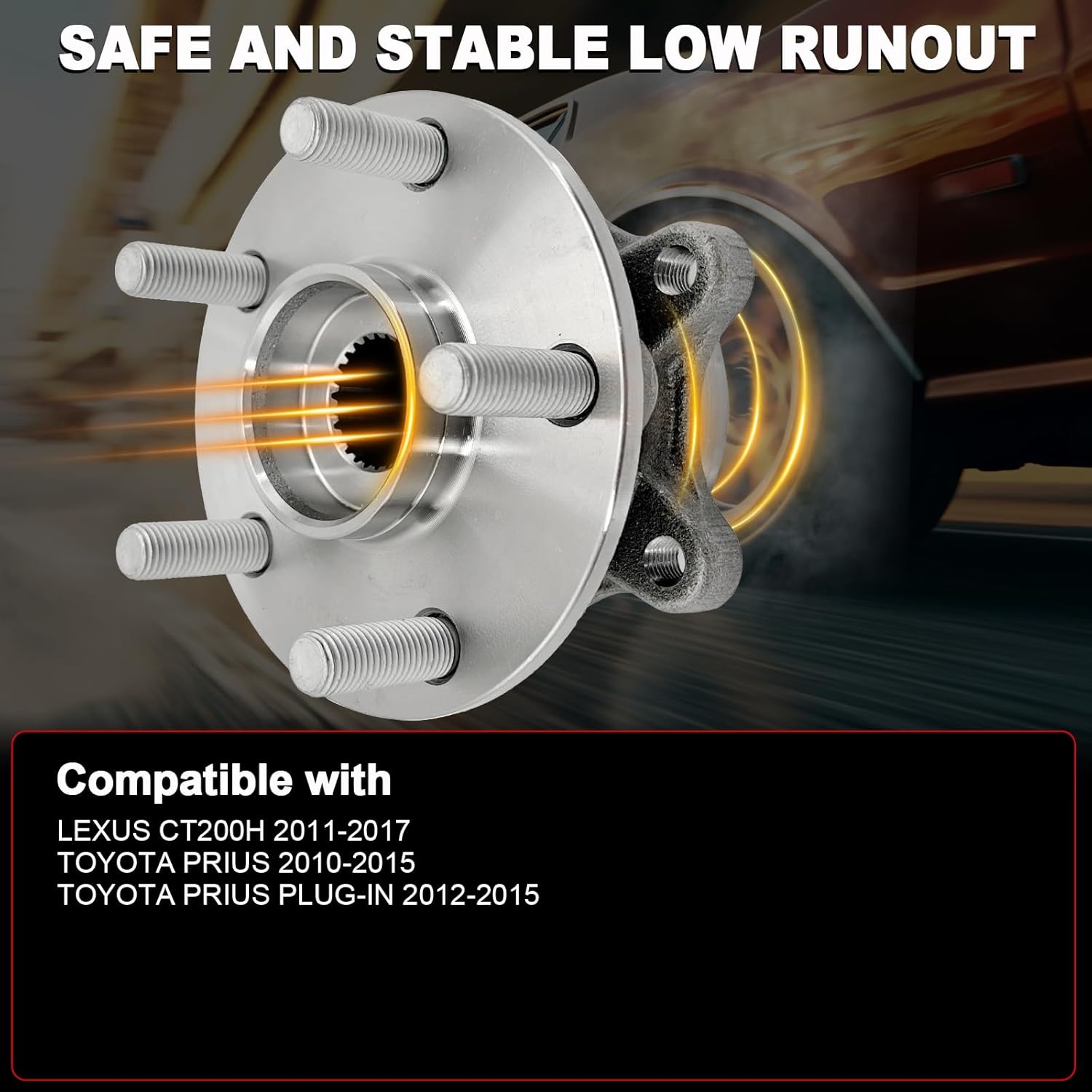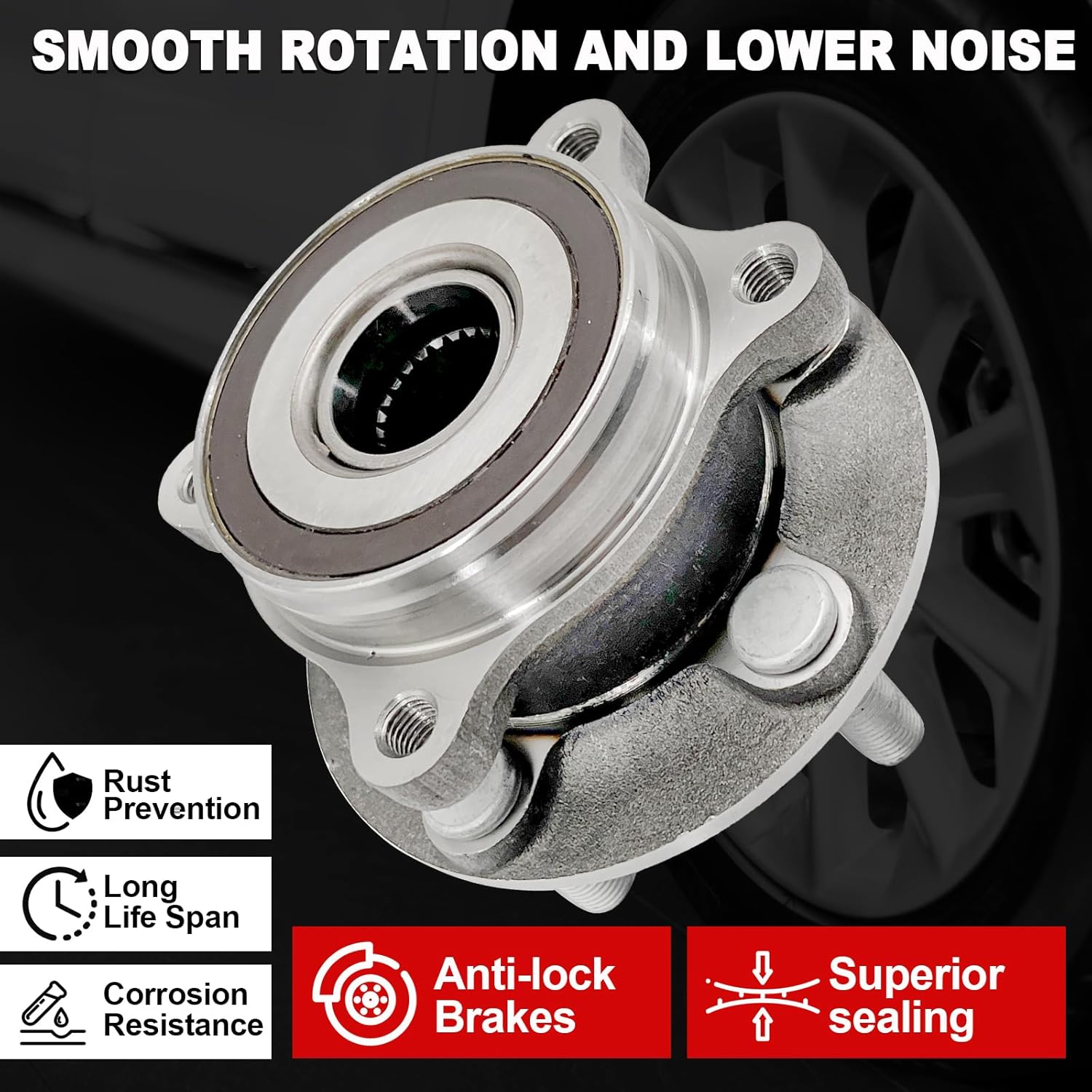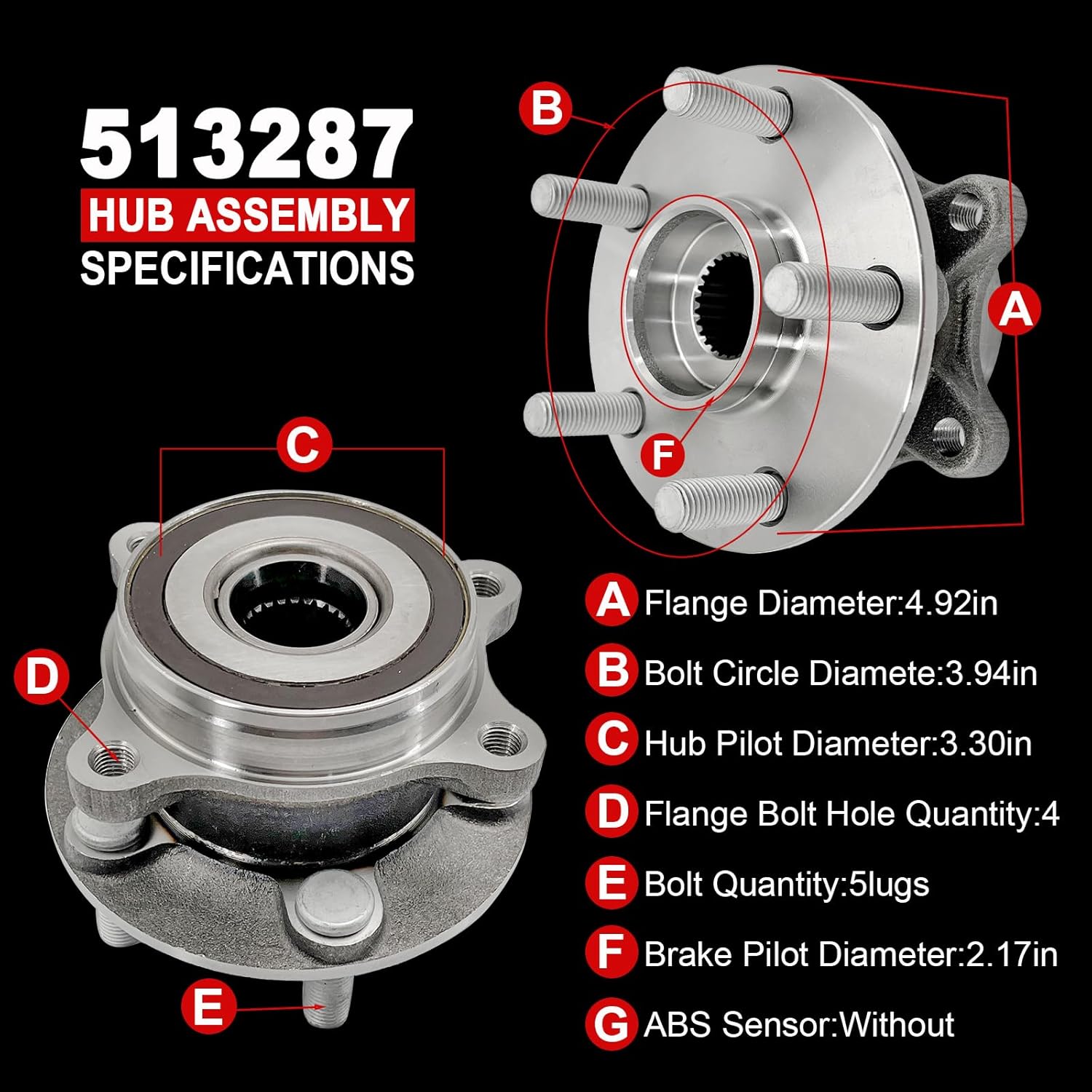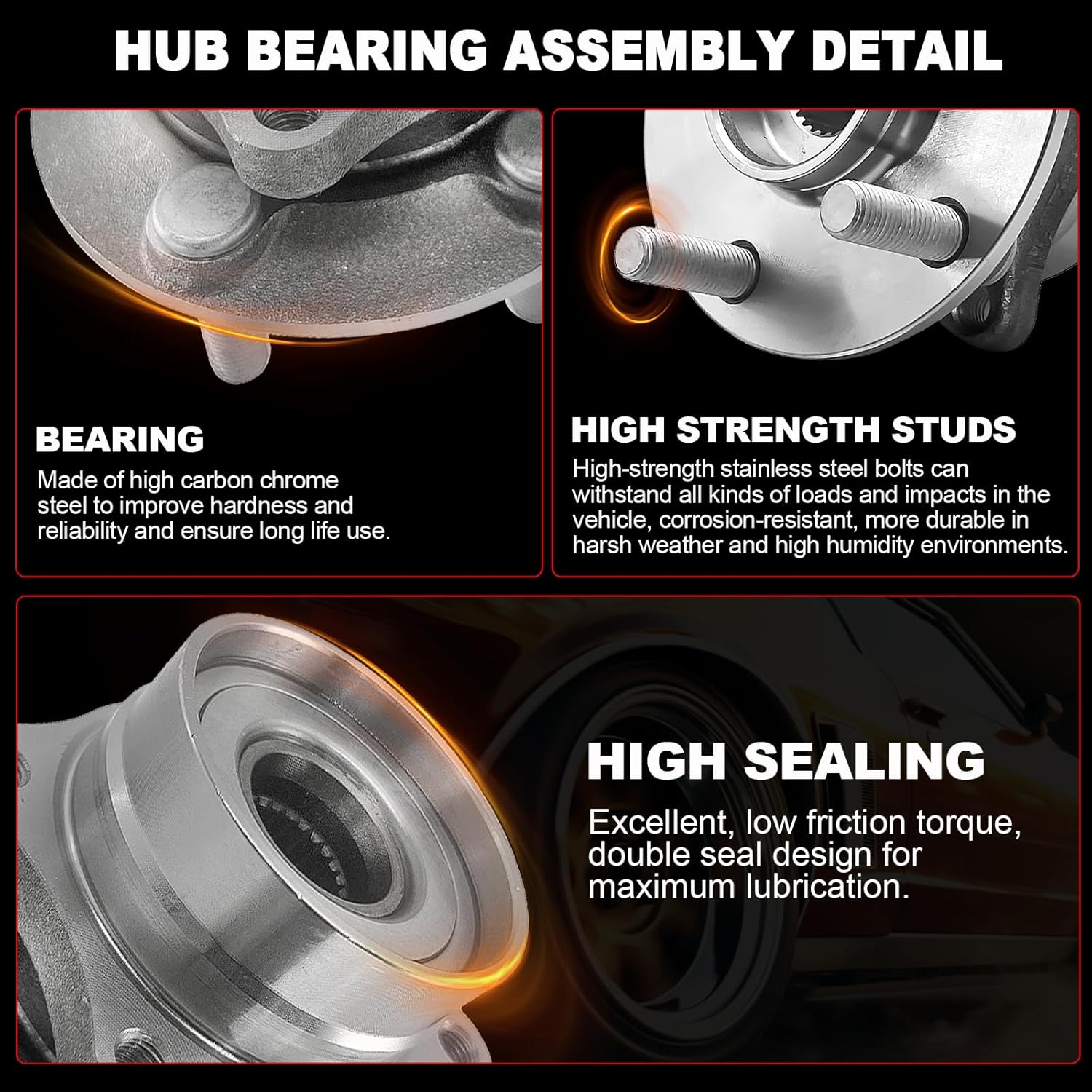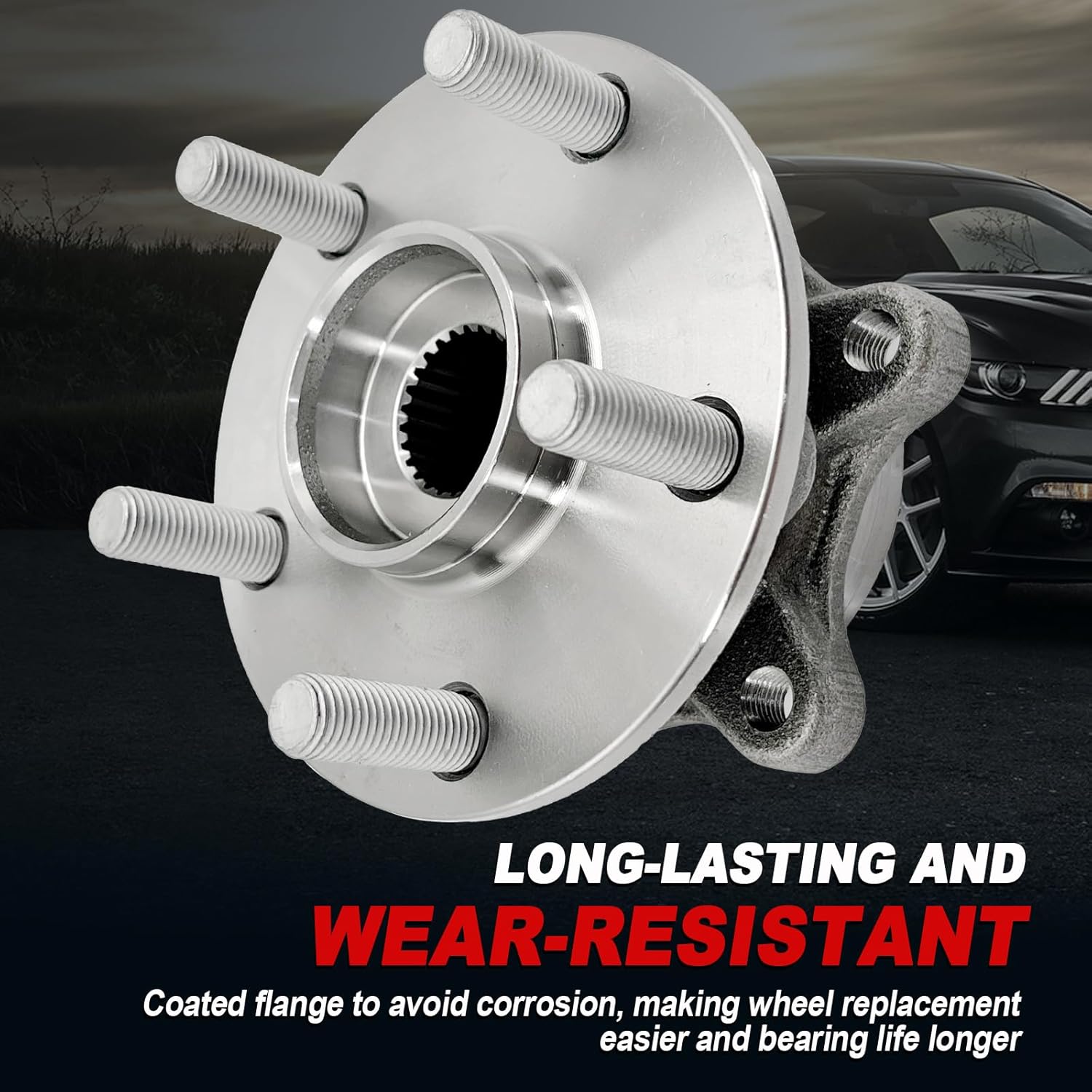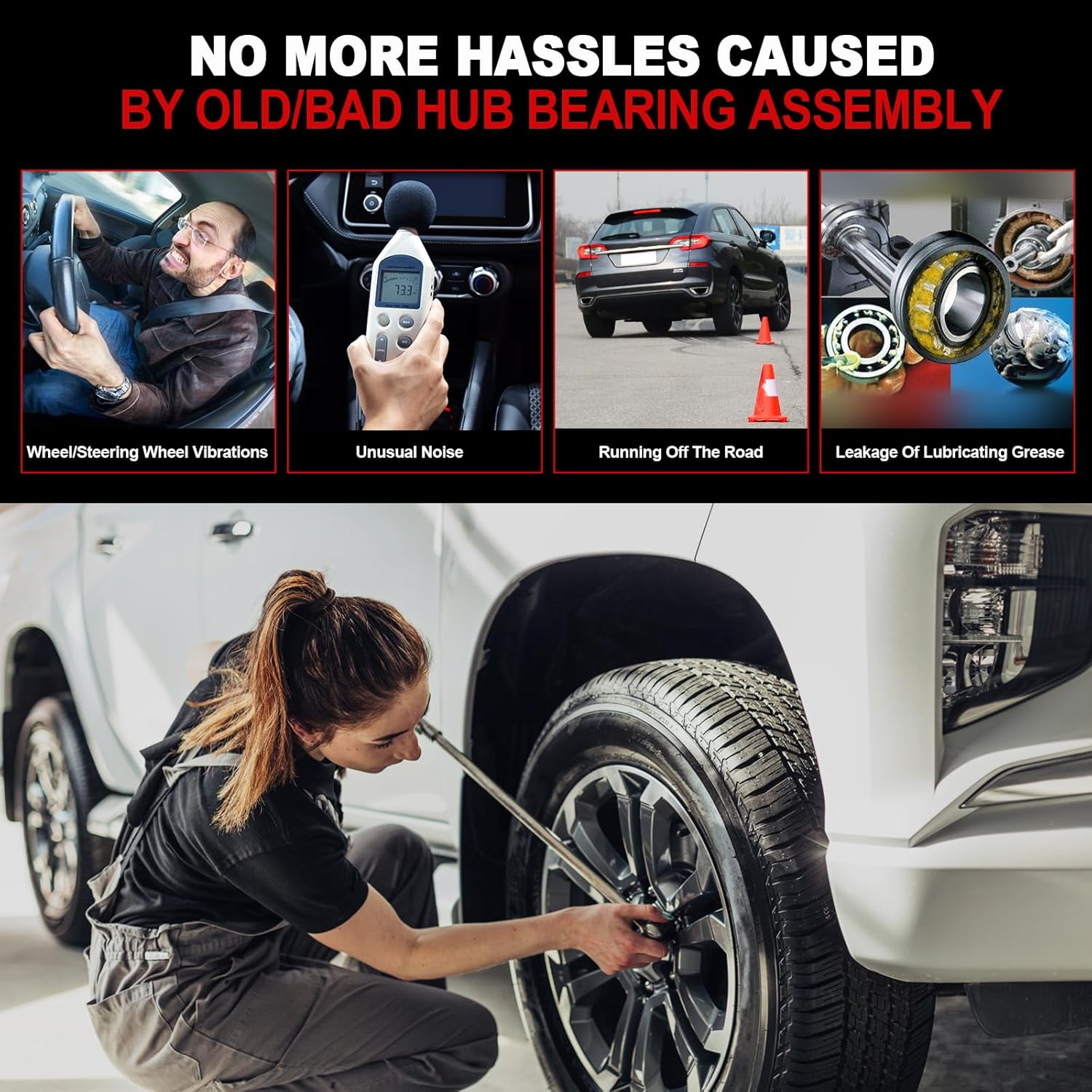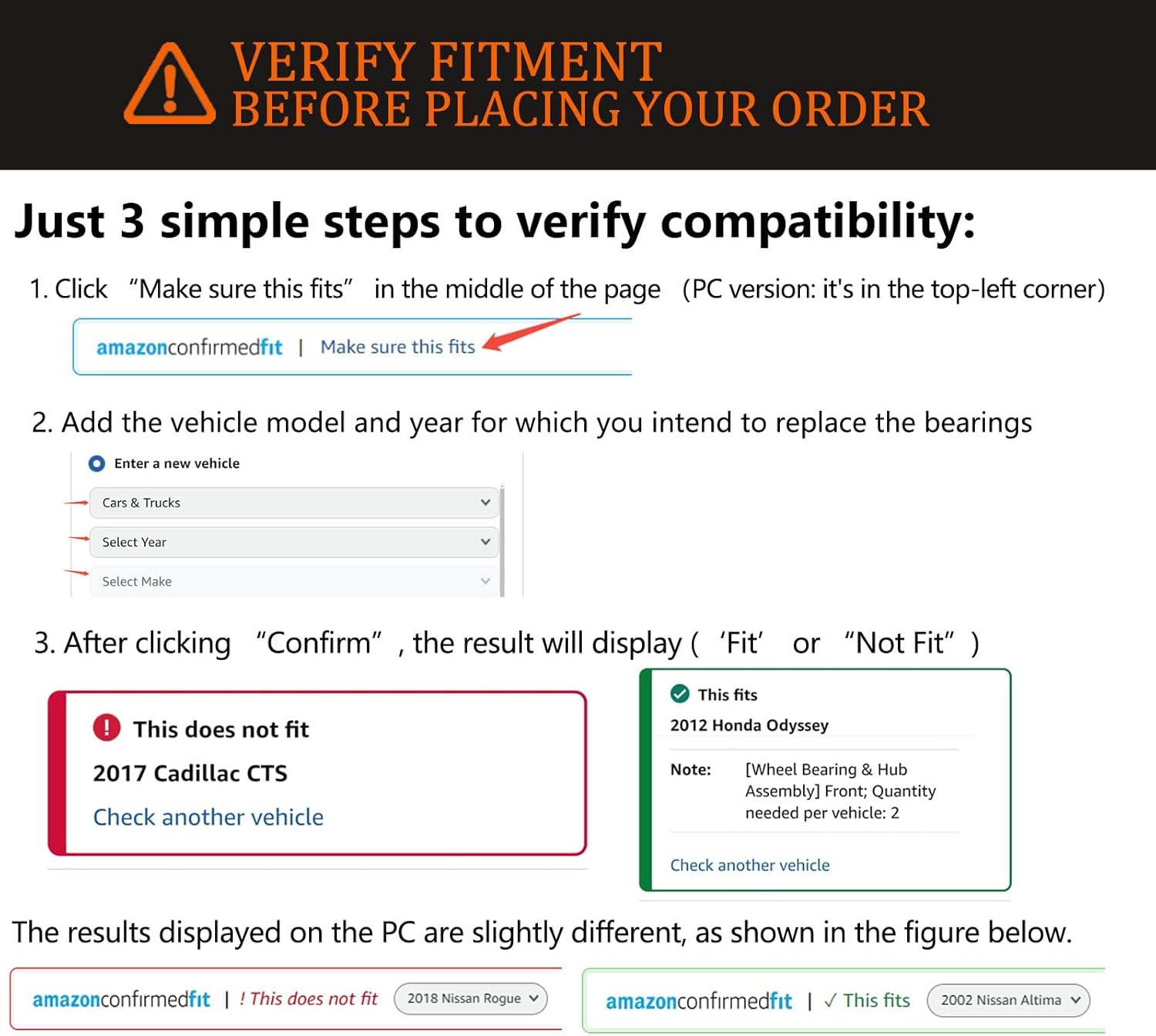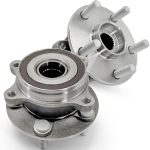
Pair 513287 Front Wheel Bearing Hub Review wheel bearing – Oemiu
Pair 513287 Front Wheel Bearing Hub Review
The silent workhorses of our vehicles, wheel bearings are often overlooked until they scream for attention. A failing wheel bearing can manifest in a variety of unsettling ways – from a low hum that gradually escalates into a roar, to vibrations that shudder through the steering wheel. Ignoring these warning signs can lead to catastrophic failure, leaving you stranded and potentially causing significant damage to other components. Replacing a faulty wheel bearing isn’t just about addressing an annoying noise; it’s about ensuring the safety and reliability of your vehicle. And when it comes to replacement parts, choosing the right components is paramount. Today, we’ll be diving deep into a specific option: the Pair 513287 Front Wheel Bearing Hub. We’ll explore its features, benefits, potential drawbacks, and ultimately, help you decide if it’s the right choice for your vehicle.
Understanding the Importance of a Quality Wheel Bearing Assembly
Before we get into the specifics of the 513287 pair, let’s take a moment to appreciate the critical role wheel bearings play. These seemingly simple components are responsible for allowing your wheels to rotate smoothly and efficiently. They sit between the wheel hub and the axle, reducing friction and enabling free movement. Without properly functioning wheel bearings, your car would struggle to move, and the immense friction would generate excessive heat and wear, quickly leading to component failure. A high-quality front wheel bearing assembly, like the 513287 pair, is designed to withstand the constant stresses and demands of daily driving. This includes not only the rotational forces but also the impacts from potholes, bumps, and uneven road surfaces. A robust design, precise manufacturing, and high-quality materials are all essential for ensuring long-lasting performance and reliability. Furthermore, the hub assembly integrates the wheel bearing, hub, and sometimes the ABS sensor, simplifying the replacement process. A poorly designed or manufactured hub assembly can compromise the integrity of the entire system, leading to premature wear and failure. This is why choosing a reputable brand and a well-engineered product like the 513287 is crucial for maintaining the safety and performance of your vehicle. The peace of mind that comes with knowing you have reliable bearings is invaluable, especially on long journeys or in challenging driving conditions. A failing wheel bearing assembly can not only be dangerous but also significantly impact fuel efficiency, handling, and overall driving experience.
Moreover, consider the impact on related components. A worn or damaged wheel bearing puts undue stress on the surrounding parts, such as the brake rotors, calipers, and suspension components. This can accelerate their wear and tear, leading to a cascade of issues and costly repairs. By investing in a high-quality wheel bearing, you’re not just replacing a single part; you’re protecting your entire vehicle from potential damage and ensuring its long-term health. Think of it as preventative maintenance that pays off in the long run. The 513287 pair aims to offer this peace of mind through its design and construction. Its ability to effectively manage load and reduce friction is paramount to smooth and efficient wheel operation. It reduces vibrations and noises that can disrupt your driving experience. This translates to more comfortable rides and enhances your overall control of the vehicle. Finally, always consider the environment where you drive. If you live in an area with harsh weather conditions, like snow or heavy rain, or drive frequently on unpaved roads, the demands on your wheel bearings are even greater. Selecting a robust and durable option like the 513287 can help withstand these challenges and extend the life of your wheel bearing assembly.
Examining the Features and Benefits of the 513287 Pair
Now, let’s delve into the specific features and benefits that the Pair 513287 Front Wheel Bearing Hub offers. These are designed to provide a reliable and durable replacement for your worn-out wheel bearings. Often, the design of this particular front wheel bearing is based on OEM (Original Equipment Manufacturer) specifications, ensuring a direct fit and proper functionality. This eliminates the need for modifications or adjustments during installation, saving you time and effort. The ease of installation is a significant advantage, particularly for DIY mechanics or those looking to minimize labor costs. A precise fit also contributes to optimal performance and reduces the risk of premature failure. Beyond fitment, material selection is key. High-quality steel alloys are used to manufacture the bearing races and hubs. This ensures exceptional strength and resistance to wear and tear. The hardness and durability of the materials are critical for withstanding the constant stress and impacts encountered during driving. Furthermore, proper heat treatment processes are applied to enhance the material properties and extend the life of the wheel bearings. This means the bearings can withstand high temperatures and heavy loads without deformation or failure.
The 513287 pair frequently incorporates advanced sealing technology to protect the bearings from contaminants such as dirt, water, and road salt. These seals are designed to keep the grease in and the contaminants out, preventing corrosion and extending the lifespan of the bearing. The effectiveness of the seals is particularly important in harsh driving conditions, where exposure to moisture and debris is high. High-quality grease formulations are often used in the wheel bearings to provide optimal lubrication and reduce friction. These greases are designed to withstand high temperatures and pressures, ensuring smooth and efficient operation. The correct type and quantity of grease are crucial for minimizing wear and preventing premature failure. Pre-greased and sealed units further simplify the installation process and ensure proper lubrication from the start. Another important feature to look for is the integration of the ABS (Anti-lock Braking System) sensor. Many modern vehicles rely on ABS sensors to monitor wheel speed and prevent wheel lockup during braking. The 513287 pair often includes a pre-installed ABS sensor that is compatible with the vehicle’s braking system. This eliminates the need to transfer the old sensor, which can be a delicate and time-consuming process. Furthermore, the integration of the ABS sensor ensures proper functionality and prevents error codes. The hub assembly often features precision-machined surfaces to ensure a tight and secure fit with the wheel and axle. These surfaces are designed to minimize runout and vibrations, contributing to smooth and quiet operation. Precise machining is also important for preventing wheel wobble and ensuring proper alignment. The pair 513287 is designed to be robust. Overall, the combination of these features and benefits makes the 513287 Pair Front Wheel Bearing Hub a compelling choice for those seeking a reliable and durable replacement. The attention to detail in design, material selection, and manufacturing processes ensures optimal performance and extended lifespan.
To summarize, here’s a quick list of key benefits:
- Direct Fit: Designed to meet OEM specifications for easy installation.
- Durable Materials: Constructed from high-quality steel alloys for strength and longevity.
- Advanced Sealing: Protects bearings from contaminants and extends lifespan.
- Optimized Lubrication: Pre-greased with high-quality grease for smooth operation.
- Integrated ABS Sensor: Simplifies installation and ensures proper ABS functionality (if applicable).
Potential Drawbacks and Considerations Before Purchasing
While the Pair 513287 Front Wheel Bearing Hub boasts numerous advantages, it’s essential to consider potential drawbacks and factors before making a purchase. One crucial aspect to verify is compatibility. Not all wheel bearing hubs are created equal, and it’s vital to ensure that the 513287 pair is specifically designed for your vehicle’s make, model, and year. Refer to the manufacturer’s specifications or use online compatibility tools to confirm a proper fit. Installing an incompatible wheel bearing can lead to improper function, premature wear, and even damage to other components. Another important consideration is the brand reputation and warranty. While the 513287 designation might be consistent across different manufacturers, the quality and reliability can vary significantly. Opt for reputable brands known for producing high-quality automotive parts. Check for warranty coverage, as this provides assurance against manufacturing defects and premature failure. A longer warranty period typically indicates greater confidence in the product’s durability. Consider user reviews and ratings to gain insights into the real-world performance of the 513287 pair from other vehicle owners. Pay attention to comments regarding installation ease, noise levels, and overall longevity. While individual experiences may vary, a consistent pattern of positive or negative feedback can be a valuable indicator of product quality. Price is another factor to consider. The 513287 pair may be available at different price points depending on the brand and retailer. While it’s tempting to opt for the cheapest option, remember that you often get what you pay for. Investing in a slightly more expensive, high-quality wheel bearing can save you money in the long run by avoiding premature replacement and potential damage to other components. The source of the part can also be a factor.
Installation complexity is another consideration. While the 513287 pair is often designed for relatively straightforward installation, it may still require specialized tools and knowledge. If you’re not comfortable performing the installation yourself, factor in the cost of professional installation. Incorrect installation can lead to premature failure and potential safety hazards. Ensure you follow the manufacturer’s instructions carefully or seek assistance from a qualified mechanic. ABS sensor compatibility is another potential issue. While many 513287 pairs include an integrated ABS sensor, it’s important to verify that it’s compatible with your vehicle’s specific ABS system. Incompatible ABS sensors can trigger warning lights and compromise the functionality of your anti-lock braking system. Double-check the sensor specifications and compatibility before purchasing. Finally, consider the overall condition of your vehicle’s suspension system. Worn or damaged suspension components can put undue stress on the wheel bearings, leading to premature failure. If your vehicle has a history of suspension problems, it may be prudent to address these issues before replacing the wheel bearings. This will help ensure that the new bearings have a long and trouble-free lifespan. Furthermore, consider your driving habits and conditions. If you frequently drive on rough roads or carry heavy loads, the demands on your wheel bearings will be greater. In such cases, it may be beneficial to opt for a heavy-duty wheel bearing designed to withstand these demanding conditions. By carefully considering these potential drawbacks and factors, you can make an informed decision and ensure that the 513287 Pair Front Wheel Bearing Hub is the right choice for your vehicle.
Comparing the 513287 Pair to Alternative Wheel Bearing Options
Before committing to the 513287 Pair Front Wheel Bearing Hub, it’s wise to compare it to alternative options available in the market. Different manufacturers offer varying levels of quality, features, and price points. Understanding these differences can help you make the most informed decision for your specific needs and budget. One common alternative is to purchase individual wheel bearings and hubs separately. This allows you to mix and match components from different manufacturers, potentially optimizing for specific performance characteristics or cost savings. However, this approach requires careful research and compatibility checks to ensure that all components work seamlessly together. Additionally, pressing the bearing into the hub can require specialized tools and expertise. Another alternative is to consider complete wheel hub assemblies from different brands. These assemblies typically include the wheel bearing, hub, and sometimes the ABS sensor, similar to the 513287 pair. Comparing the features, materials, and warranty of these alternative assemblies can help you determine the best value for your money. Consider brands known for their durability, reliability, and customer support. Performance-oriented wheel bearings are designed for enthusiasts who demand the highest levels of performance and durability. These bearings often feature advanced materials, tighter tolerances, and specialized lubrication to withstand extreme conditions. While they typically come at a higher price point, they can offer significant benefits in terms of handling, braking, and overall performance.
To help visualize the differences, consider the following comparison table:
| Feature | Pair 513287 Front Wheel Bearing Hub | Individual Wheel Bearing & Hub | Alternative Complete Hub Assembly (Brand X) | Performance Wheel Bearing |
|---|---|---|---|---|
| Installation | Relatively easy, direct fit | Requires pressing bearing into hub | Relatively easy, direct fit | Relatively easy, direct fit |
| Materials | High-quality steel alloys | Varies depending on brand | Varies depending on brand | Advanced materials (e.g., ceramic) |
| ABS Sensor | Often included, pre-installed | Sold separately | May or may not be included | May or may not be included |
| Price | Mid-range | Potentially cheaper (depending on components) | Varies depending on brand | High-end |
| Warranty | Varies depending on brand | Varies depending on brand | Varies depending on brand | Varies depending on brand |
Ultimately, the best wheel bearing option depends on your specific needs and priorities. If you’re looking for a convenient and reliable replacement with a direct fit, the 513287 Pair Front Wheel Bearing Hub is a solid choice. If you’re seeking to optimize for cost or performance, exploring alternative options may be worthwhile. Remember to carefully research and compare the features, materials, and warranty of each option before making a decision. Choosing the right hub wheel bearing ensures the longevity and safety of your vehicle.
Don’t overlook the importance of proper maintenance. Regularly inspecting your wheel bearings for signs of wear or damage can help prevent premature failure. Listen for unusual noises, such as humming or grinding, and check for excessive play in the wheel. Addressing potential problems early can save you money and prevent more serious issues down the road. Remember, a well-maintained wheel bearing contributes to a smooth, safe, and enjoyable driving experience. A good heavy-duty wheel bearing can offer enhanced durability. Consider all aspects before making your choice.
Frequently Asked Questions
What are the symptoms of a failing wheel bearing?
A failing wheel bearing can manifest in several ways, making it crucial to pay attention to your vehicle’s sounds and handling. One of the most common symptoms is a humming or rumbling noise that increases with speed. This noise may be subtle at first but will gradually become louder and more noticeable as the bearing deteriorates. You might also notice a grinding or clicking sound, especially when turning. This can indicate that the bearing is severely damaged and needs immediate replacement. Another symptom is excessive play in the wheel. You can check this by jacking up the vehicle and attempting to move the wheel side to side. If there’s noticeable movement, it suggests that the wheel bearing is loose or worn. Vibrations in the steering wheel or the floorboard can also be a sign of a failing wheel bearing. These vibrations may be intermittent at first but will become more consistent as the bearing worsens. Finally, uneven tire wear can be an indicator of a wheel bearing issue. If you notice that one tire is wearing out faster than the others, it could be due to a misaligned wheel caused by a worn wheel bearing. Addressing these symptoms promptly can prevent further damage and ensure your safety on the road.
How difficult is it to replace a wheel bearing myself?
The difficulty of replacing a wheel bearing yourself depends on several factors, including your mechanical skills, the tools you have available, and the specific vehicle you’re working on. Generally, replacing a wheel bearing can be a moderately challenging task for experienced DIY mechanics. It typically involves removing the wheel, brake caliper, rotor, and hub assembly. Special tools, such as a bearing press or a hub puller, may be required to remove and install the wheel bearing properly. Without these tools, you risk damaging the new bearing or the surrounding components. Additionally, working with suspension components can be dangerous due to the potential for spring compression. If you’re not comfortable working with these systems, it’s best to seek assistance from a qualified mechanic. However, with the right tools, knowledge, and patience, many DIY mechanics can successfully replace a wheel bearing themselves. Online tutorials and repair manuals can provide step-by-step instructions and helpful tips. Just be sure to prioritize safety and take your time to avoid making mistakes.
What tools do I need to replace a wheel bearing?
Replacing a wheel bearing typically requires a specific set of tools to ensure a safe and successful job. Here’s a list of essential tools:
- Jack and Jack Stands: To safely lift and support the vehicle.
- Wheel Chocks: To prevent the vehicle from rolling.
- Socket Set: Including sockets for lug nuts, brake caliper bolts, and hub assembly bolts.
- Wrench Set: For various nuts and bolts.
- Torque Wrench: To tighten bolts to the correct specifications.
- Hammer: For gently tapping components into place.
- Pry Bar: To help separate components.
- Brake Caliper Compressor: To retract the brake caliper piston.
- Hub Puller: To remove the hub assembly from the spindle.
- Bearing Press: To remove and install the wheel bearing in the hub. (Can often be rented from auto parts stores)
- Punch Set: To drive out stubborn parts.
- Penetrating Oil: To loosen rusted or seized bolts.
- Safety Glasses and Gloves: To protect your eyes and hands.
Having these tools on hand will make the wheel bearing replacement process much smoother and safer. Remember to always consult your vehicle’s repair manual for specific tool requirements and instructions.
How long does a wheel bearing typically last?
The lifespan of a wheel bearing can vary significantly depending on several factors, including driving conditions, vehicle type, and maintenance habits. Generally, a wheel bearing can last anywhere from 75,000 to 150,000 miles or more. However, some wheel bearings may fail prematurely due to factors such as rough roads, potholes, heavy loads, and improper installation. Driving in areas with harsh weather conditions, such as snow and salt, can also accelerate wear and tear on wheel bearings. Regular maintenance, such as checking for play and lubricating the bearings, can help extend their lifespan. Additionally, avoiding hard impacts and driving smoothly can reduce stress on the wheel bearings. It’s important to pay attention to the symptoms of a failing wheel bearing and address them promptly to prevent further damage and ensure your safety. By following these guidelines, you can maximize the lifespan of your wheel bearings and minimize the risk of unexpected failures.
Are all 513287 wheel bearings the same?
No, not all 513287 wheel bearings are created equal. While the “513287” designation refers to a specific type or size of wheel bearing, different manufacturers produce these bearings with varying levels of quality, materials, and features. Some manufacturers may use higher-quality steel alloys, more precise machining, and more robust sealing technology. Others may prioritize cost savings over quality, resulting in a less durable and reliable product. It’s important to research different brands and read reviews to get a sense of the quality and performance of their 513287 wheel bearings. Additionally, check for warranty coverage, as this can provide assurance against manufacturing defects and premature failure. Opting for a reputable brand with a proven track record of producing high-quality automotive parts is generally a good idea. While it may cost slightly more upfront, it can save you money in the long run by avoiding premature replacement and potential damage to other components. Consider looking at heavy-duty front wheel bearing options to help extend the wheel bearing life.
Can a bad wheel bearing affect my ABS system?
Yes, a bad wheel bearing can definitely affect your ABS (Anti-lock Braking System). Many modern vehicles have ABS sensors integrated into the wheel hub assembly. These sensors monitor the speed of each wheel and transmit this information to the ABS control module. If a wheel bearing is worn or damaged, it can cause the wheel to wobble or vibrate, which can interfere with the ABS sensor’s ability to accurately measure wheel speed. This can trigger the ABS warning light and disable the ABS system. In some cases, a failing wheel bearing can also damage the ABS sensor itself, requiring replacement of both the wheel bearing and the sensor. Additionally, a worn wheel bearing can create excessive heat, which can damage the ABS sensor wiring or connectors. Therefore, it’s important to address a bad wheel bearing promptly to prevent potential issues with your ABS system. Replacing the wheel bearing and ensuring that the ABS sensor is functioning properly is crucial for maintaining the safety and performance of your vehicle.
How do I know if I need to replace both wheel bearings at the same time?
While it’s not always necessary to replace both wheel bearings at the same time, it’s often recommended, especially if the bearings have similar mileage and age. Wheel bearings typically wear out in pairs, meaning that if one bearing has failed, the other bearing is likely to fail soon as well. Replacing both bearings simultaneously can save you time and money in the long run by avoiding a second repair visit. Additionally, replacing both bearings can ensure consistent handling and braking performance. If you only replace one bearing, the new bearing may perform differently than the old bearing on the opposite side, which can affect the vehicle’s stability and control. However, if the other wheel bearing is relatively new and in good condition, it may not be necessary to replace it. In such cases, it’s important to carefully inspect the remaining bearing for any signs of wear or damage before making a decision. Consider the cost of the parts and labor involved in replacing both bearings versus replacing only one. A professional mechanic can advise you on the best course of action based on your specific situation.
